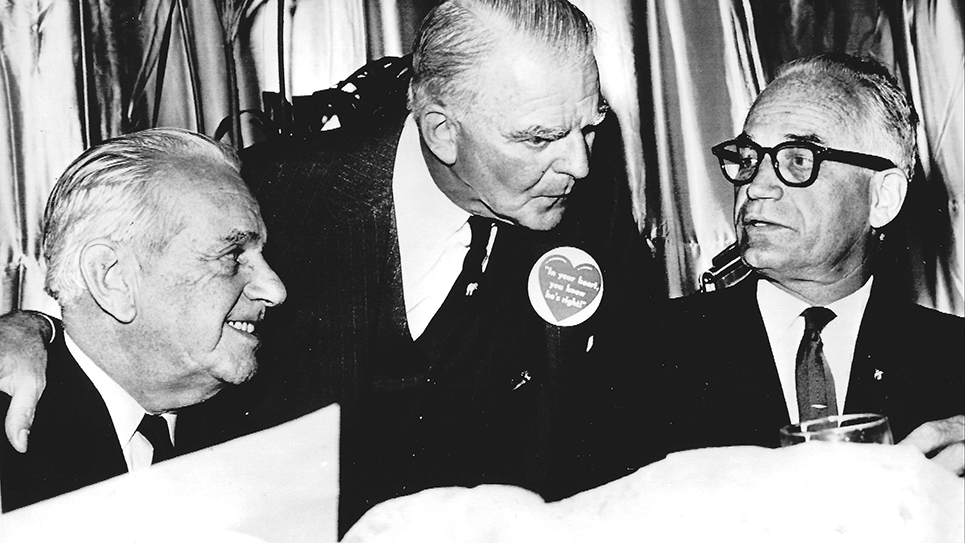On the Fed’s rate cut
By Dr. Harold A. Black
blackh@knoxfocus.com
haroldblackphd.com
As widely anticipated, the Fed announced a cut in its Fed Funds target rate. Mind you this is not a cut in market interest rates but a cut in the interest rate on overnight bank borrowings. The cut was 50 basis points which lowers the target range on Fed Funds from 5.25% – 5.5% to 4.75% – 5%. Normally, the Fed moves in steps of 25 basis points so in the past a change of 50 basis points would have engendered a strong reaction in the market. However, the Dow Jones only went up by 100 points which is a rounding error in a market where the Dow Jones sits at 41,503 and fell back 100 points a day later. So what happened? The reason there was little if any effect was that the market was anticipating a cut of 50 basis points. Any other change would have moved the market but not this one even some clueless media types called the move “historic.”
Remember the story about the two-handed economist – “On the one hand / On the other hand”? If the market were excited that a 50 basis point cut would stimulate economic activity by making borrowing cheaper, the Dow Jones would have moved significantly up. If the market had thought that the Fed had panicked over the lousy job numbers, the market would have fallen. Rather, the market reaction was ho-hum – a more wait-and-see. The Fed is signaling with the 50 bp cut that it has inflation under control and we can have employment growth without an uptick in prices. If the market felt the same way, we should have seen a stronger market reaction. Instead, the virtually stable movement shows caution and skepticism.
Consumers should not get all excited either. Credit card interest rates are notoriously slow to change. Currently sitting at 22 percent, even if the entire 50 basis points were deducted, credit card rates would be 21.5% – not a whopping change. Given the demand for credit, those rates will probably stay in the same place. Where some difference will be felt is in adjustable rate loans where the adjustable rates that are indexed will fall, causing a fall in the loan rates in the next cycle. Again the rate change will be small. The one area where the 50 basis points will be felt will be in CD rates. For the past year or so, consumers have seen fairly decent CD rates. Now those rates will fall a bit, actually hurting those savers – mainly seniors – who save using CDs. My sainted mother asked me back in 2020 when her CD rates were barely positive, “Why does the Fed hate old people?”
The more important move by the Fed will be the next one. The market is actually anticipating that the Fed will continue to cut by another 50 – 75 basis points by the end of the year. Unless there is some crisis, the Open Market Committee will meet in November and December meaning another 50 basis point cut might occur at one of those meetings. However, at this meeting of the Open Market Committee, one Fed governor argued for a smaller cut this time and perhaps next, while two governors indicated that this one cut might be enough.
On the political front, there are some who will argue that the rate cut will help Kamala Harris by goosing up the economy prior to the election. Lawrence Kudlow is in this camp and he should know better. He argues that the cut wasn’t necessary right now and if there were one, then only 25 basis points should occur. Yet the markets indicated that anything other than a 50 basis point cut would have been met with a much more sizable reaction. No action or a 75 basis point reduction would have sent the markets tumbling in disarray. History has shown us that when the Fed moves in a direction or magnitude not anticipated then markets behave almost irrationally.
What about future cuts? Will they have an impact on the election? In a word, no. The election is November 5th and the next Open Market Committee meeting is November 6-7. Although I do not want to get into the technical weeds, the market is concerned with the natural rate of interest. This is unobservable but is the real rate of interest (nominal interest rate adjusted for inflation) that occurs at full employment with a stable rate of inflation. Some estimates say this rate should be 2.5%. So a very crude calculation is that if the Fed Funds rate is 4.75% and the natural rate is 2.5% then the Fed will have to cut the Fed Funds rate even more going forward.






